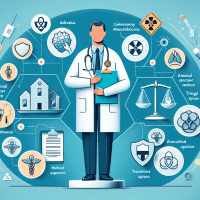Mesothelioma Environmental Risk Assessment: A Caring Guide
Hello, I’m a registered nurse with over 10 years of experience in oncology, specializing in patient education and support. Today, I want to share with you detailed insights on mesothelioma environmental risk assessment – a subject that deeply affects many families, patients, and caregivers. My aim is to provide you with not only information but also empathy and hope as you navigate these difficult times.

Understanding Mesothelioma and Its Environmental Risks
Mesothelioma is a rare but aggressive form of cancer primarily associated with asbestos exposure. I have witnessed firsthand the impact of asbestos not only on those directly exposed but also on their families who face emotional, physical, and financial challenges. In addressing mesothelioma environmental risk assessment, it’s essential to understand how and why exposure occurs in various settings, such as homes, industrial sites, and commercial properties.
What is an Environmental Risk Assessment?
An environmental risk assessment evaluates the likelihood and potential harm from exposure to hazardous substances, such as asbestos. This process is crucial in identifying risks and ensuring that those affected can take appropriate preventive measures. When discussing mesothelioma risk assessment and related topics like asbestos exposure assessment, my advice is rooted in years of frontline experience and genuine care for those impacted.
Steps and Components of Risk Assessments
Over the years, I have seen how a thorough risk evaluation can change lives. A comprehensive mesothelioma environmental risk assessment typically includes:
- Site Inspection: On-site evaluations identifying potential asbestos-containing materials.
- Sampling and Testing: Professional asbestos testing both in residential and commercial settings.
- Risk Evaluation: Analysis of exposure levels and health risk determination.
- Report Generation: Detailed findings and recommended actions to mitigate or eliminate risk.
A Quick Visual Guide
Below is a simple table outlining the key elements of an environmental risk assessment:
| Assessment Component | Description | Example |
|---|---|---|
| Site Inspection | Identifying locations with potential asbestos exposure | Residential homes built before 1980 |
| Sampling & Testing | Collecting samples for lab analysis | Certified environmental asbestos testing for commercial properties |
| Risk Evaluation | Determining potential health risks | Mesothelioma risk evaluation in industrial sites |
| Recommendations | Guidelines for remediation and safety improvements | Professional asbestos exposure risk evaluation for homes |
Real-World Insights and My Personal Reflections
I’ve been in rooms filled with worry and uncertainty – moments that I know you might be experiencing now. I’ve seen how a detailed asbestos environmental analysis can provide clarity and, ultimately, the power to make informed decisions. My approach has always combined factual data with genuine empathy, ensuring that you feel understood and supported every step of the way.
A Personal Reflection
There have been times when I witnessed families overwhelmed by fear, unsure of where to turn. My commitment to you is to ensure that you have access to every resource that can help demystify the complexities of mesothelioma and its risks, empowering you to take control of both safety and well-being.
Integrating Medical and Emotional Support
It’s important for you to know that while an assessment can highlight risks, it also opens the pathway to proactive solutions. I encourage you to consult with specialized professionals if there’s any suspicion of asbestos exposure. Reputable sources like the National Cancer Institute and the American Cancer Society provide comprehensive information that can be a vital part of your support system.
Diagnosis and Treatment Considerations
Timely diagnosis is crucial. Diagnostic assessments often involve imaging tests, biopsies, and consultations with oncologists who are familiar with the nuances of mesothelioma. By understanding the stage of the cancer, we can better tailor treatment options, such as surgery, chemotherapy, and radiation, to each unique situation.
Emotional and Community Support
Beyond physical health, the emotional toll of mesothelioma is profound. I have personally supported many who felt isolated and overwhelmed by the diagnosis. Engaging in community forums, support groups, and counseling can provide immeasurable comfort and resilience. Remember, you are not alone in this journey.
How This Website is Supported
Before you move further, I want to share a brief note on how this website operates: our resources are funded through modest sponsorships that do not influence the integrity of the content. This support helps ensure that you receive comprehensive information at no cost. Transparency is key, and I am committed to keeping your well-being as my top priority.
Additional Resources and Next Steps
If you’re looking to further explore the aspects discussed, here are additional internal links you may find beneficial:
- Mesothelioma Treatment Options: Detailed pathways and latest clinical practices in treating mesothelioma.
- Mesothelioma Patient Support: Resources for emotional support, community connections, and caregiving guidance.
Words of Encouragement I’ve Found Helpful
In these challenging times, please hold on to hope. Every day brings new opportunities to learn, adapt, and find strength in community. As someone who has seen the hardest times, I believe in the resilience of the human spirit. Take one step at a time, and remember, you are supported and understood.
Information on treatment guidelines current as of May 2025.
Visualizing the Risk Assessment Process
To help illustrate the process, imagine a flowchart that takes you step-by-step through a comprehensive mesothelioma environmental risk assessment, including each key phase from inspection to recommendation. This visual aid can really clarify the process and help you understand both where risks originate and how to mitigate them.
Promo Image 1:
Promo Image 2:
Final Thoughts and Compassionate Guidance
My journey in oncology has taught me that a thorough understanding of mesothelioma risks transforms uncertainty into empowerment. Whether you are a patient, a caregiver, or a concerned family member, I urge you to seek out both the scientific and emotional resources available. Take advantage of expert consultations, detailed risk assessments, and community support networks to gain a clearer pathway forward.
Please remember that while this post provides comprehensive insights, it is not a substitute for individualized professional medical advice. Always consult with specialized healthcare professionals regarding personal health issues.
Thank you for taking the time to read this post. I hope that my personal insights have provided you comfort, clarity, and practical guidance as you navigate this journey. Stay hopeful, stay informed, and know that you are not alone.






